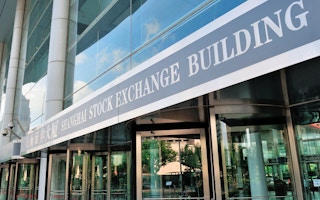There are several motivations for companies to make sustainability a business priority.
To continue reading, subscribe to Eco‑Business.
There's something for everyone. We offer a range of subscription plans.
- Access our stories and receive our Insights Weekly newsletter with the free EB Member plan.
- Unlock unlimited access to our content and archive with EB Circle.
- Publish your content with EB Premium.
In some instances, it is a fundamental part of a company’s business model. In others, companies are driven by economic imperatives, or are reacting to adverse events that have already affected the firm negatively, such as allegations of child labour or toxic spills.
But whatever an organisation’s disposition towards sustainability may be, there is a growing demand coming from several quarters for companies to be more transparent in their environmental, social, and corporate governance - known as ESG - practices.
Business leaders can no longer be complacent and rely on financial performance alone – ESG metrics are increasingly being factored into any evaluation of companies. Investors, regulators, and customers alike are increasingly demanding more transparency from firms.
The Regulatory Imperative
In Europe in September 2014, the Council of the European Union amended their company reporting requirements to improve the transparency of certain large companies on social and environmental matters. EU Member States will transpose the rules into national legislation by December 2016 so that large public interest enterprises with more than 500 employees will report on ESG matters.
In the United States, companies have seen more modest regulatory demands on reporting. The Dodd-Frank Wall Street Reform and Consumer Protection Act in 2010 gave authority to the Securities and Exchange Commission (SEC) to implement rules for increased disclosure from publically traded companies. However, few rules have actually been issued.
In Asia, a region with a historically weak record on ESG transparency, many stock exchanges are revamping their ESG disclosure rules to meet growing global demand for better transparency of risk. Hong Kong, Singapore and Taiwan are in the process of introducing new reporting rules on listed companies to provide greater insight into their ESG practices.
The Investor Imperative
While regulatory efforts can be compelling motivations within certain jurisdictions, investors have a global influence that spans borders with its control of capital.
In the US alone, between 2012 and 2014, the number of money managers and institutional investors who identified ESG factors in investment decisions grew by 3.4 times to represent a total of over US$4.8 trillion in assets under management.
While professional investors have been expanding their tools and strategies around ESG, retail investors are gaining new capabilities as well.
Also in the US, companies like Motif Investing provide easy-to-use consumer investment tools with access to thematic investment options that include ESG-related themes. For instance, investors can choose from “Values-Based Motifs” such as “Cleantech Everywhere” and “Income Inequality”.
Aspiration – whose tagline reads “Investing. With a Conscience” – has partnered with the Sierra Club to expand their sustainable investment options in companies that reduce carbon emissions, embrace renewable energy, or are reducing their dependence on fossil fuels.
The Customer Imperative
But perhaps the biggest motivation for companies to change their ESG behaviour will come from the ultimate arbitrator of a company’s success: their customers.
In the business-to-business (B2B) space, firms will increasingly demand ESG disclosures from their suppliers and partners to satisfy their overall sustainability strategy. For example, Nike assesses their suppliers on sustainability factors in addition to the normal factors like cost, quality, and on-time delivery.
“
One thing is for sure: with greater transparency driven by regulatory and market forces, organisations will increasingly be held accountable for their ESG-related behaviour.
In the business-to-consumer (B2C) space, this is more challenging as consumers often do not consider ESG factors; and if they do, it is limited, taking the forms of hashtag activism on social media or online petitions.
Change seems to be afoot, however. According to a Nielson global online study published in December 2015, 66 per cent of global respondents say they’re willing to pay more for products and services that come from companies that are committed to positive social and environmental impact, up from 55 per cent in 2014, and 50 per cent in 2013.
As commerce around the world has been shifting significantly to online and mobile experiences, consumers will increasingly get a chance to impose their ESG-related preferences and choose products and companies for more than just their prices.
The Journey
As the sustainable practices of firms are brought under scrutiny, the need for consistent and comparable disclosure has become an urgent imperative.
Some of the major providers of sustainability reporting include the Global Reporting Initiative’s Sustainability Reporting Standards, the OECD Guidelines for Multinational Enterprises, the United Nations Global Compact’s Communication on Progress, and the ISO 26000 - International Standard for social responsibility.
As companies consider the frameworks that would be most applicable to them, the frameworks themselves are evolving to meet the needs of firms and their stakeholders, as well as enable reporting parity between standards.
The GRI, for instance, continues to refine their reporting standards. In April 2016, the organisation announced revisions to their framework.
According to Eric Hespenheide, Chair of the Global Sustainability Standards Board, the proposed changes “are evolving into a new set of modular, interrelated GRI Standards to enable reporting organisations to make a greater contribution to sustainable development and meet emerging stakeholder needs by enhancing the quality, comparability and accessibility of sustainability information”.
The full ecological and social impact of a firm is a complex problem to address. But the good news is: information technology is improving the firms’ and their stakeholders’ ability to identify, measure, track, and compare impact.
While it’s fair to say that disclosure alone does not necessarily mean a firm is living up to its full sustainability potential, nonetheless, transparency can drive competition for capital and sales.
One thing is for sure: with greater transparency driven by regulatory and market forces, organisations will increasingly be held accountable for their ESG-related behaviour.
Steve Harbick is an Eco-Business writer and founder and Chief Technology Officer at Honest Capitalism, a Singapore-based start-up building tools for empowering consumers to make informed, sustainability-minded purchases.









